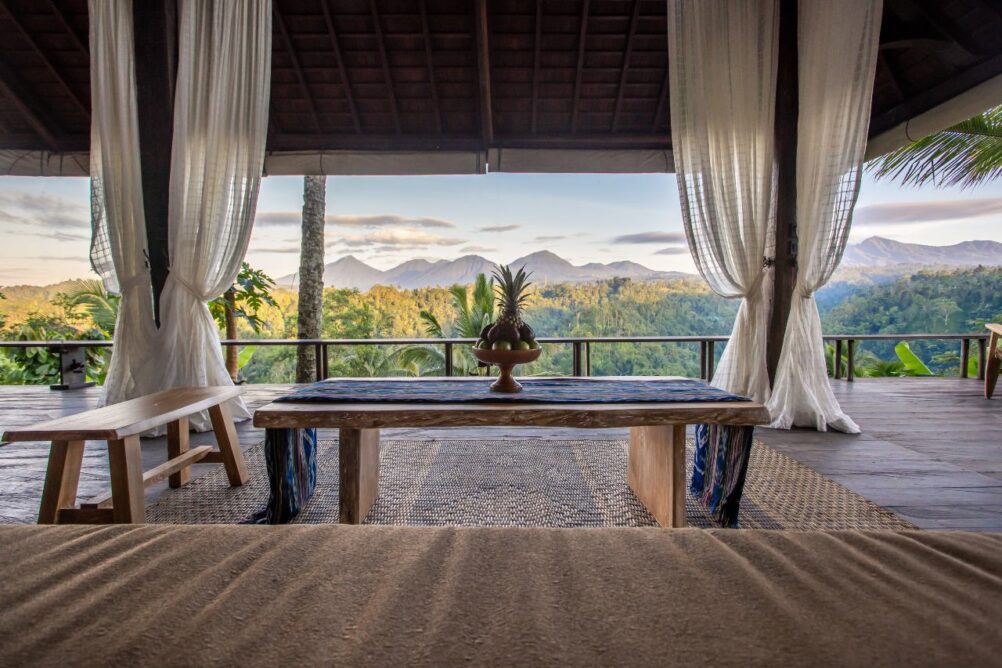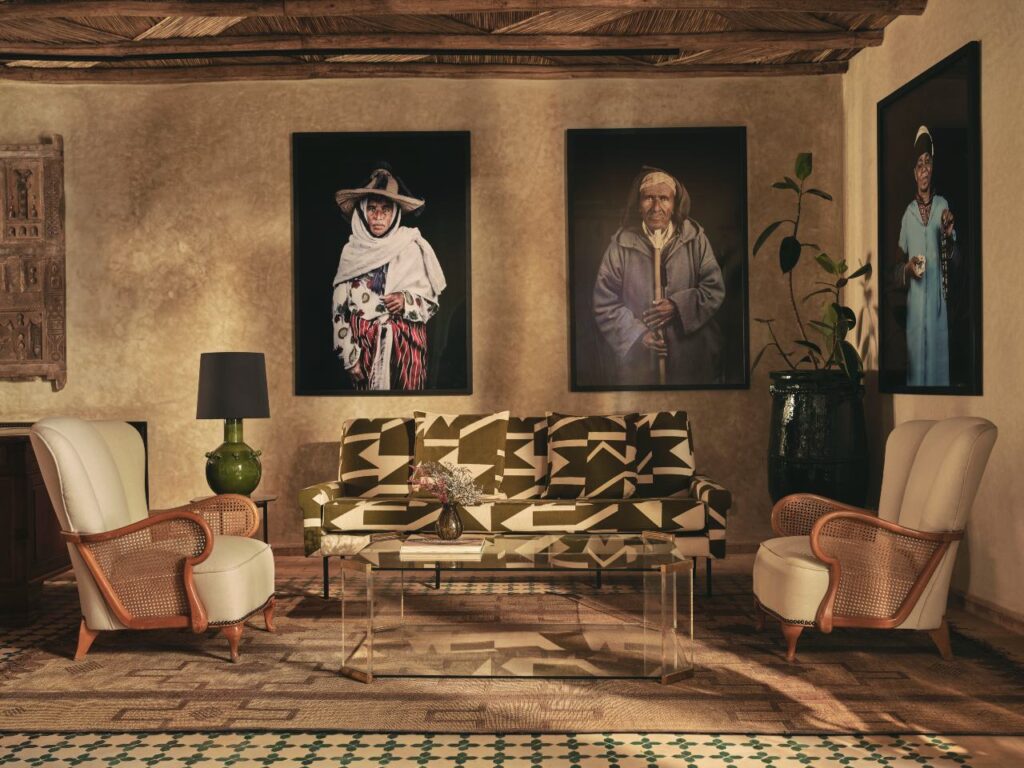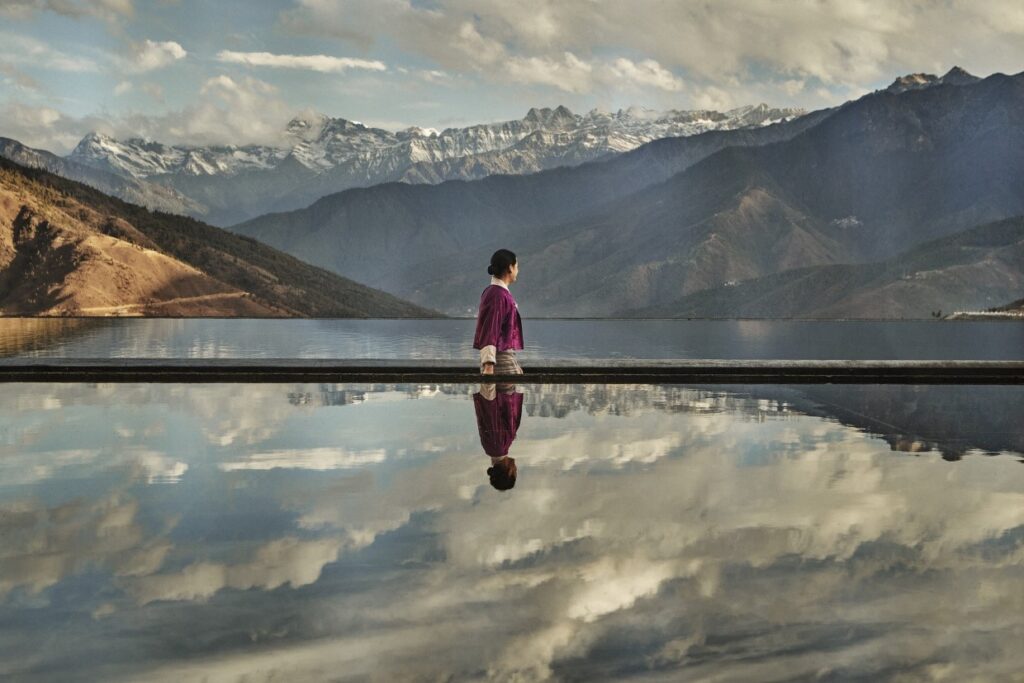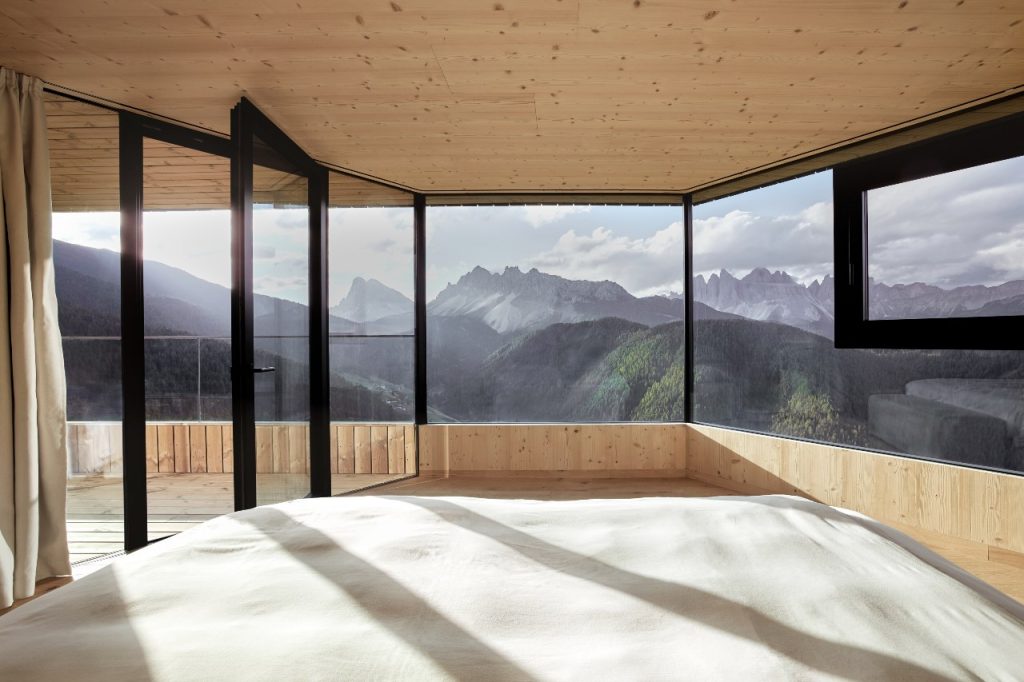No walls, no doors: is this the future of luxury?
Buahan, a Banyan Tree Escape, Bali’s most boundary-busting resort, is doing more with less.
Words by Ute Junker
Photos supplied
A longer version of this article first appeared in the Australian Financial Review
An after-dark arrival, it turns out, is not the ideal start to a stay at Buahan, A Banyan Tree Resort. It is not just that you miss out on the magnificent views, over the jungle and across to one of Bali’s sacred peaks, that greet new arrivals. If you are anything like me, a 90-minute nocturnal drive from the airport to the resort is enough to encourage second thoughts.
The idea of a resort that invites nature in, with no walls and no doors on your accommodation, sounds appealing when you are stuck in a big city. But driving through the tropical night alive with the sounds of frogs and insects, I start to wonder just how wild this experience is going to get.
I soon have my answer. One of Buahan’s wonderfully-friendly staffers wields a flashlight as he leads me down a series of winding paths to my bale, or villa, because these paths have been left deliberately unlit, in keeping with the nature-first philosophy. The paths have also been left unmanicured, so you need to watch your step to avoid stray stones and pebbles.
Fortunately the first sight of my bale allays my worst fears. With the lights on and the semi-sheer drapes drawn around the expansive pavilion, its soft glow is instantly inviting. There is plenty of room to spread out as well as all the necessary luxuries, from a king-size bed to a huge soaking tub and even a plunge pool.
A fan cools the space while the sounds of the surrounding jungle turn out to be soothing rather than disturbing. Although I listen carefully, there is no telltale mosquito buzz – perhaps thanks to the small gecko that scurries around the mirror on my vanity.
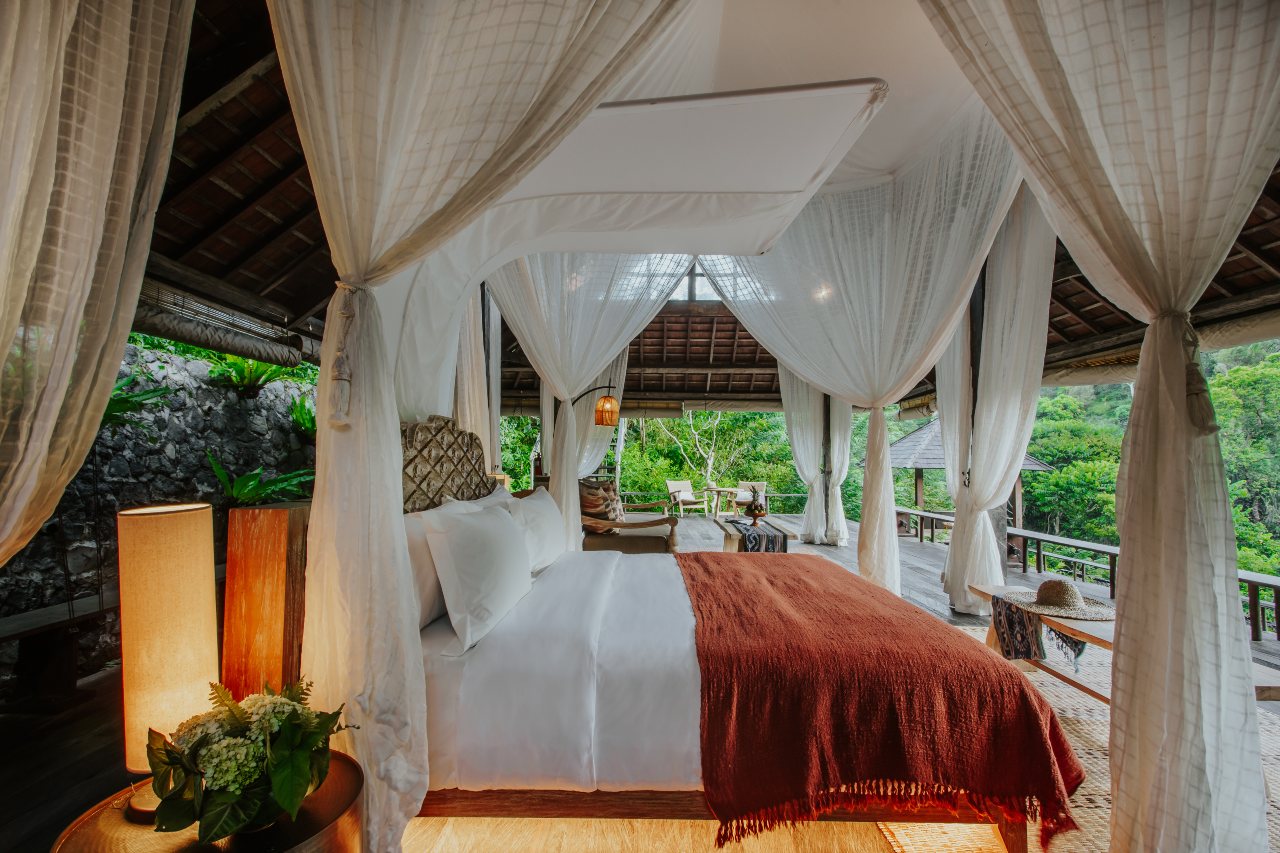
It isn’t until the next morning that I realise how truly spectacular this adults-only resort is. In front of me is a jungle panorama so verdant that I find myself breathing more slowly and deeply, eager to fill my lungs with oxygen-rich air.
Some of Buahan’s other distinctive touches reveal themselves more slowly. Every day I notice another clever aspect of the design: the way that carefully-planted vegetation screens the nearby bales from view, for instance, or the way each bale is set high above the ground, providing better vistas while also lowering the risk of any animal intruders.
Buahan is the first property in the new Banyan Tree Escape brand, which continues Banyan Tree’s history of boundary-pushing. Thirty years ago the opening of the first Banyan Tree resort – built on a remediated tin mine in Phuket, using natural materials, biophilic design and eco-conscious operating procedures – proved that a more planet-friendly style of luxury was possible.
Since then, the Banyan Group has expanded to include 12 global brands and more than 70 properties, all the while maintaining its commitment to responsible travel. “Our sustainability ambitions have expanded alongside our portfolio,” says Philip Lim, senior vice president and head of regional operations and group specialist services.
The new Banyan Tree Escape brand dials up the ambition, literally breaking down the walls between guests and nature. It is not an approach that will work for every traveller, of course. I soon discover that the area’s winding pathways require not just good mobility but also a certain amount of patience – there are no shortcuts at mealtimes when I take the uphill climb to the restaurant. (An inclinator is available, but it’s not particularly close to my bale.)
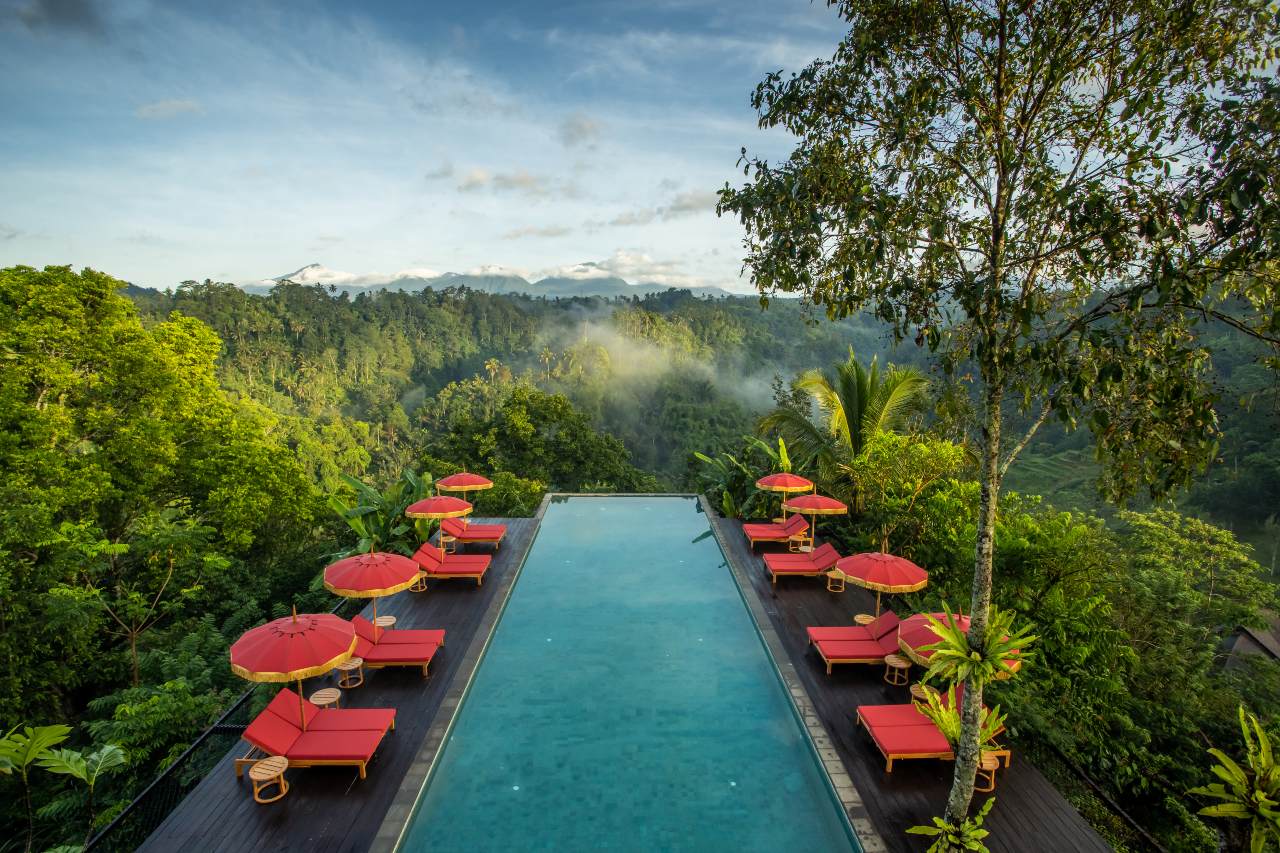
It also places restrictions on the designers. For a start, the need to maintain privacy limits the number of guests that can be accommodated on the site. (Buahan contains just 16 bales.)
The design team spent three months in the nearby village before work began to map things such as wind patterns and the movement of sunlight across the site, factors which have less of an impact when your guests are shielded by walls but which matter a lot when you are open to the elements.
The same considered approach has been applied to the food. Buahan’s zero-waste menu has plenty of plant-based dishes as well as animal proteins, with the majority of ingredients sourced within a one-hour drive of the property. Some are even grown on site.
The lunch and dinner menus feature mouthwatering Indonesian dishes including char-grilled river prawns marinated with chilli sambal and 12-hour slow-cooked free-range duck with Balinese spices, as well as some western options. But Buahan’s most distinctive offering is its breakfast menu.
Daily selections include a foraged dish (such as a salad of assorted cucumbers and fresh cheese), a “heritage” dish – perhaps nasi jagung made with rice and corn – and an egg dish, which might be a slow-cooked duck egg served with creamed mushrooms and wilted amaranth leaves on toasted sourdough.
The resort’s program of activities draws on its strong ties with the local community. Guests can sign up for a trek through lush rice paddies or visit local villages in a vintage car to learn more about how daily life unfolds. There are opportunities to plant trees and visit a local farming family, as well as a superb selection of massages.
My most memorable activity is the Soul Freedom Journey, a purification experience which takes advantage of the resort’s overlooking the Ayung River Valley. Some of the steps down to the river are a little slippery – I hold on tightly to the railing – but the ritual of making an offering and stepping into the waterfall to be purified leaves me feeling unexpectedly rejuvenated.
Keep reading
You might also like:
Unwinding comes naturally at Forestis in Italy’s Dolomites
These top chefs are rescuing forgotten plants from extinction
Why the underwater paradise of Palau is luxury’s new frontier
